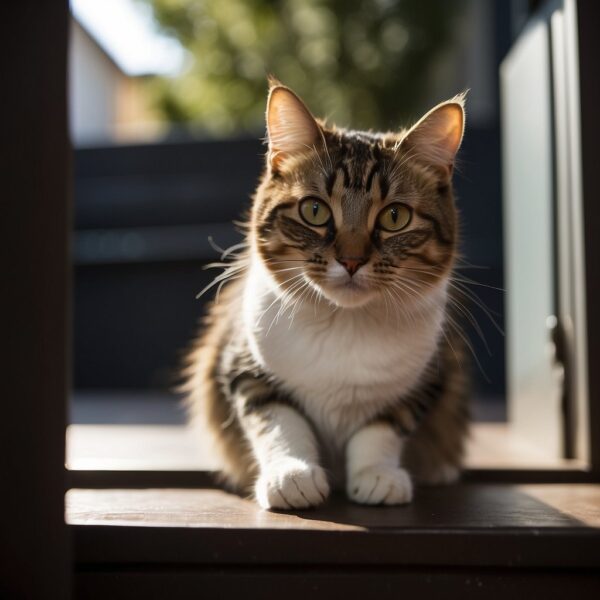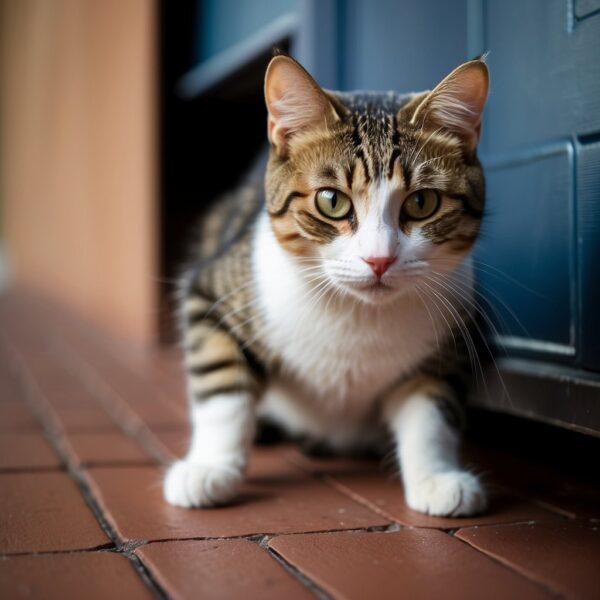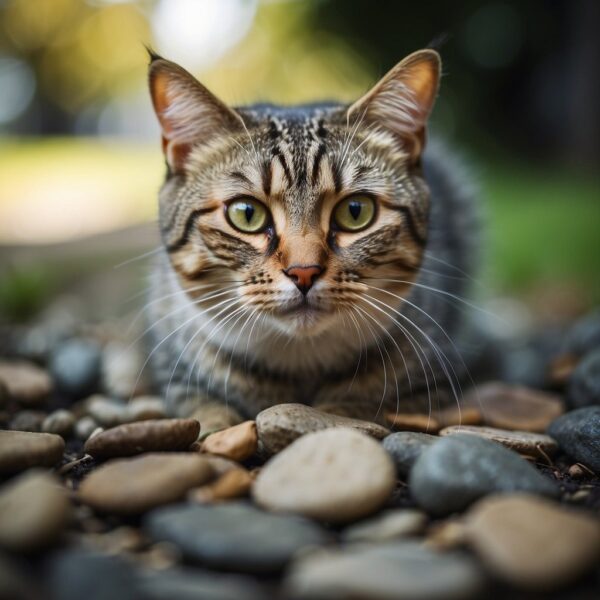
Separation Anxiety in Cats
Separation anxiety in felines is a condition that manifests when a cat experiences elevated levels of stress due to the absence of their parent or a significant member of their household. Recognizing the signs of this condition is essential for any cat parent, as cats are skilled at hiding their distress, making it challenging to identify. Robust evidence indicates that cats are indeed capable of developing clinical signs of separation anxiety, although this might have been overlooked historically given their reputation as solitary animals.
The signs of separation anxiety in cats often include atypical urination, excessive vocalization, and other behaviors indicative of distress when isolated. A cat’s environment, daily routines, and the nature of its relationship with their guardians can all contribute to the development and management of separation anxiety. It is vital to distinguish these behavioral signs from medical problems, which requires consulting a veterinarian to ensure proper diagnosis and treatment.
Key Takeaways
- Understanding your cat’s behavioural patterns is essential for detecting separation anxiety.
- Differentiating between behavioral and medical issues requires professional veterinary insight.
- Effective management of separation anxiety involves creating a comfortable environment and stable routines.
Understanding Separation Anxiety
Separation anxiety is a distressing emotional disorder that occurs in pets when they are separated from their guardians. It presents through various behavioral signs and can significantly impact the well-being of affected animals.
Defining Separation Anxiety
Separation anxiety is characterized by signs of stress and anxious behavior that are evident when an animal is left alone or separated from their primary caretaker. In cats, such behaviors may manifest as excessive meowing, inappropriate elimination, and destructive actions directed toward objects associated with the guardian or the barriers that prevent access to their guardian.
Prevalence in Cats versus Dogs
The occurrence of separation anxiety is widely recognized in dogs, often evidenced by destructive behavior, barking, and restlessness. However, it is also present in cats, although they may exhibit more subtle signs such as hiding or sleeping excessively, which can lead to an underestimation of its prevalence in feline populations. Unlike in dogs, where diagnosis rates in behavior clinics range from 20% to 40%, the percentage of cats diagnosed with separation anxiety is challenging to ascertain due to the understatement of symptoms by cat parents.
Identifying the Signs of Separation Anxiety
Separation anxiety in felines is characterized by evident changes in behavior and physical state when they are separated from their parents or primary caregivers. Recognizing these signs is crucial for early intervention and management.
Common Behavioral Signs
Cats may exhibit various behaviors that signal distress due to separation anxiety. These behaviors serve as key indicators of their emotional state:
- Destructive Behavior: Cats may scratch furniture, walls, or door frames excessively.
- Excessive Vocalization: Persistent meowing, crying or howling can be a manifestation of their anxiety.
- Inappropriate Elimination: Urinating or defecating outside the litter box is a common sign, albeit not exclusive to anxiety.
- Excessive Grooming: Over-grooming to the point of causing skin irritation or bald patches.
- Hiding: Seeking isolation more than usual may indicate discomfort.
- Trying to Escape: Attempts to flee from home, especially around departure times, can signal distress.
Physical Symptoms of Distress
In addition to behavioral changes, cats may show physical symptoms when experiencing separation anxiety. Observable physical responses include:
- Vomiting: Repeated unexplained vomiting may occur in the absence of other health issues.
- Changes in Eating Habits: Diminished appetite or changes in eating patterns during owner absence.

Potential Causes and Triggers
Separation anxiety in cats can stem from a variety of sources, ranging from changes in environment to the early stages of their development. Understanding these factors is crucial for addressing and managing this condition.
Environmental Factors
- Routine Changes: Cats are creatures of habit, and alterations in their daily routine can induce stress. This includes changes in feeding times, the guardian’s schedule, or even rearrangements within the home.
- Pandemic Effects: Due to the significant shift in guardians’ presence at home during the pandemic and subsequent return to work, some cats may struggle to adapt to the reduced attention and presence, triggering anxiety.
Effects of Early Weaning and Abandonment
- Early Weaning: Cats separated from their mother or siblings too early may develop anxiety issues. This premature weaning can interfere with their natural learning about coping mechanisms and social cues.
- Orphaned or Abandoned: Those that have been orphaned or abandoned at a young age are at a higher risk of experiencing separation anxiety due to the lack of a stable early-life environment and secure attachment.
Attachment Styles and Bonding
- Attachment to a Specific Person: Some cats may develop a particularly close bond with one individual, leading to anxiety when separated from that person.
- Lack of Socialization: Inadequate socialization during the critical early weeks of life might result in poor adaptability and increased likelihood of anxiety when confronted with being alone.
Differentiating Separation Anxiety from Medical Problems
Identifying separation anxiety in cats involves distinguishing behavioral issues from underlying medical problems. Recognizing the correct issue is pivotal for effective treatment.
Behavioral versus Physical Health Issues
When a cat shows signs of distress during a parent’s absence, it may be quick to label these as separation anxiety. However, physical health issues such as a urinary tract infection could manifest with similar symptoms, like inappropriate elimination. It’s vital to consider both the behavioral symptoms, such as vocalization or clinginess, and physical symptoms including changes in appetite or litter box habits.
The Importance of a Veterinary Diagnosis
To properly diagnose separation anxiety, a veterinary behaviorist or a general practitioner with behavioral expertise should conduct a comprehensive assessment. The diagnosis should differentiate between behavioral symptoms of separation anxiety and symptoms of medical problems. Only a professional diagnosis can ensure that a medical problem is not mistaken for, or contributing to, the behavior of concern.

Strategies for Managing Separation Anxiety
Successful management of separation anxiety in cats hinges on a combination of behavior modification, environmental enrichment, and appropriate medical intervention. Understanding and applying these targeted strategies may significantly reduce a cat’s anxiety.
Behavior Modification Techniques
Behavior modification aims to change the cat’s emotional response to being alone. Desensitization is a core technique where the cat is gradually exposed to being alone for increasing periods. Counter-conditioning can be used simultaneously, associating the parent’s departure with positive experiences such as treats or playtime.
Environmental Enrichment
Providing a stimulating environment minimizes stress and anxiety for felines. Key elements include:
- Interactive Toys: Engage the cat’s hunting instincts even when alone.
- Climbing Structures: Offer vertical spaces for exploration and comfort.
- High places and hideaways cater to a cat’s need for safe observation points.
Medical and Nutritional Solutions
When behavior modification and environmental enrichment are insufficient alone, the following may be recommended:
Pheromones:
- Synthetic pheromones mimic natural cat odors, promoting a sense of security and well-being.
Medication:
- Pharmaceuticals: Anti-anxiety medication prescribed by a vet can alleviate anxiety symptoms.
- Natural supplements, such as those containing L-tryptophan or nutraceuticals.
Treats:
- Some calming treats are formulated with ingredients that support relaxation without pharmaceuticals.
Creating a Safe and Stimulating Environment
Creating a safe and stimulating environment is essential for reducing separation anxiety in cats. It ensures they remain engaged while their parents are away, lessening anxiety-related behaviors.
Toys and Entertainment
Interactive Toys and Puzzle Feeders: A variety of toys helps to keep a cat’s mind active. Puzzle feeders not only provide entertainment but also slow down feeding, which engages a cat’s natural hunting instincts. Interactive toys can simulate the movement of prey and can be timed to activate throughout the day to maintain interest.
- Toys: Balls, mice toys, feather wands
- Puzzle Feeders: Food puzzles, treat balls
Television and Window Perches: Leaving the television on nature channels or installing a window perch by a bird feeder can offer visual stimulation, mimicking the outdoor environment. This can be particularly effective for indoor cats, providing them with a safe way to satisfy their curiosity about the world outside.
Comforting Sounds and Scents
Radio and Music: Soft, calming sounds can help soothe a cat’s anxiety. Turning on a radio or TV to a classical music station, or using pet-specific music playlists designed to relax animals, can create a comforting auditory environment.
Pheromone Products: Products releasing calming pheromones, may help reduce stress and anxiety. These can be used in diffusers throughout the living space to create a consistent calming effect.
- Scents: Pheromone diffusers, familiar scents on bedding
- Sounds: Classical or soft instrumental music, nature sounds
Daily Routines and Training
Cat parents can significantly reduce signs of separation anxiety in cats by establishing daily routines and implementing specific training strategies. Routines create predictability, while training methodologies such as desensitization and counterconditioning help cats cope with their parents’ departures.
Establishing Consistent Schedules
Cats thrive on consistent daily schedules, which include regular feeding times, play sessions, and periods of interaction with their parents. A structured routine can provide a sense of security for cats, making them less prone to develop anxiety-related behaviors. It’s important to include:
- Fixed Meal Times: Feeding cats at the same time each day.
- Scheduled Play Sessions: Engaging in play at regular intervals to ensure mental and physical stimulation.
- Departure Routine: Establishing a calm routine when preparing to leave can reduce stress associated with guardians leaving the home.
Cats are highly perceptive and can become stressed by changes in their environment or schedule. Maintaining a stable routine is crucial for their emotional well-being.
Desensitization and Counterconditioning
Desensitization involves gradually exposing a cat to departure cues, such as keys or a coat, without actually leaving, thus lessening the cat’s reaction over time. Start with minimal exposure and gradually increase the intensity of the cue as the cat becomes less reactive.
Counterconditioning is a method to change the cat’s emotional response to stressful events. It often involves pairing departure cues with positive experiences—for example, giving a favorite treat or engaging in play. Over time, the cat learns to associate these previously distressing cues with positive outcomes.

Supporting Your Cat During and After Separation
To mitigate separation-related stress in felines, it is critical to implement measures that foster a sense of security and independence. Effective strategies include reward-based incentives and the development of a cat’s autonomous capabilities.
Offering Rewards and Positive Reinforcement
Rewarding cats when they show signs of calm behavior during and after periods of separation can reinforce positive associations with being alone. One can:
- Leave treats: Hide small treats around the cat’s environment for them to find when alone.
- Engage in play: Prior to leaving, engage the cat with interactive toys, and reward them after play to associate this routine with positive experiences.
A safe space, such as a cozy cat bed or a perch with a view, can also serve as an ideal spot for the cat to receive treats, further associating that space with comfort and security.
Long-term Strategies for Independence
Developing a cat’s independence is essential for their well-being in the absence of pet parents. This can be cultivated through:
- Enrichment Activities: Provide puzzles or feeding toys that challenge the cat and keep them engaged while alone.
- Routine: Maintain a consistent schedule for feeding, play, and interaction to build a predictable environment that reassures the cat.
In some cases, getting another cat can offer companionship, but it’s important to match temperaments appropriately to avoid additional stress.
When to Seek Professional Help
Recognizing severe signs of separation anxiety in cats is crucial for cat parents. If standard methods fail to ease a cat’s distress, it may be time to consider professional support for separation-related issues.
Consulting with Pet Behavior Experts
A veterinarian specializing in animal behavior, known as a veterinary behaviorist, can provide invaluable assistance when signs of separation anxiety cause persistent problems despite prior attempts at managing them. They may implement a combination of behavior modification plans, medical therapy, and environment changes tailored to each case. Cat parents should not hesitate to consult a professional if their cat displays:
- Frequent destructive behavior when alone
- Excessive vocalization or constant meowing
- Litter box mishaps despite being well-trained
- Marked changes in eating habits during parent’s absence
Regular veterinarians can also contribute to the treatment plan by ruling out medical issues that could manifest as anxious behavior.
Utilizing Support Networks
It can be helpful for pet parents to engage with support networks consisting of other cat parents facing similar challenges, along with professionals. Socialization and exposure to various environments can improve a cat’s adaptability and potentially mitigate its anxiety. Local or online support groups can offer:
- Shared experiences and strategies from other cat parents
- Recommendations for reputable animal behaviorists or trainers
- Emotional support for pet parents during the adjustment and treatment period
By leveraging these networks, pet parents gain access to a collective pool of knowledge and resources that can aid in the management of their cat’s separation-related problems.

Frequently Asked Questions
Separation anxiety in cats often manifests through distinct behavior patterns. Recognizing and addressing these signs is essential for the well-being of feline companions.
How can one recognize the indications of separation anxiety in cats?
One may notice symptoms such as inappropriate urination, excessive vocalization, or destructive behaviors when a cat is experiencing separation anxiety. These signs typically occur in the absence of the guardian and may point to distress.
What are some common behavioral signs of stress or anxiety in cats?
Common signs include excessive grooming, change in appetite, withdrawal from social interactions, and changes in sleep patterns. Stress can also lead to physical symptoms such as diarrhea or vomiting.
Which treatments are effective for managing separation anxiety in cats?
Treatments can include behavior modification techniques, environmental enrichment, pheromone therapies, and in some cases, medication prescribed by a vet. Consistent routines and familiar objects may also provide comfort and relief.
Can male cats experience separation anxiety differently than females?
There is currently no conclusive evidence suggesting a significant difference in the way male and female cats experience separation anxiety. Both genders can show signs of stress when separated from their guardians.
What strategies help alleviate separation anxiety in cats during nighttime?
Providing a comfortable and secure sleeping area, as well as interactive toys that keep the cat engaged, can help. Maintaining a calm and quiet environment during bedtime routines also supports cats in feeling more relaxed at night.
Is it possible for cats to develop anxiety from being separated from their feline companions?
Yes, cats can form strong social bonds with other cats and may display signs of anxiety when separated from their feline companions. This can include vocal distress, restlessness, or searching behaviors.